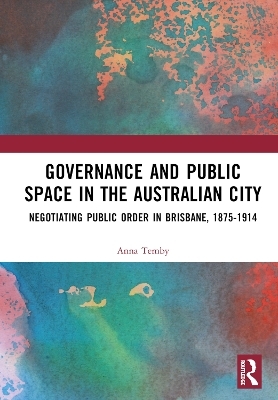
Governance and Public Space in the Australian City
Routledge (Verlag)
978-1-032-48494-5 (ISBN)
Governance and Public Space in the Australian City is a rich and evocative examination of the production and use of public spaces in Australian cities in the late-nineteenth and early-twentieth centuries. Using Brisbane as a case study, it demonstrates the way public spaces were constructed, contested, and controlled in attempts to create ‘ideal’ city spaces. This construction of space is considered not just in the literal and material sense but also as a product of aspirational and imaginative processes of city-building by municipal authorities and citizens.
This book is as much about people as it is about cities – uncovering the manner in which perceived models of ideal urban citizenship were reflected in the production and ordering of city spaces. This book challenges common narratives that situate public spaces as universal or equalising aspects of the urban sphere. Exploring three distinct types of public space – the streets, slums, and parks – the book questions how urban spaces functioned, alongside how they were intended to function. In so doing, Governance and Public Space in the Australian City situates public spaces as products of manipulation and regulation at odds with broader concepts of individual liberty and the ‘rights’ of people to public space.
It will be illuminating reading for scholars and students of urban history and Australian history.
Anna Temby is a Research Associate at the University of Queensland, researching the construction and contestation of space in late-colonial Australian cities. Her research interests include the social appropriation and shaping of space, urban municipalism, discursive urban representation, and the aspirational/imaginative processes of urban formation and city-building.
Introduction. Part One – The Streets 1. "City improvements are not made for men who walk backwards": Safety and Comfort in the Streetscape 2. "Not every person who waits is loitering": Municipal Bylaws and Civil Liberties in the Streetscape Part two – The Slum 3. The ‘Hard’ City Slum – Materiality and Moralism in Frog’s Hollow 4. The ‘Soft’ City Slum: Frog’s Hollow as a Site of Social Otherness Part three – The Natural Environment 5. Breathing Spaces in a Wilderness of Bricks and Mortar 6. Regulating Nature – The Paradox of the Park. Conclusion
| Erscheinungsdatum | 21.09.2023 |
|---|---|
| Zusatzinfo | 40 Halftones, black and white; 40 Illustrations, black and white |
| Verlagsort | London |
| Sprache | englisch |
| Maße | 174 x 246 mm |
| Gewicht | 489 g |
| Themenwelt | Geschichte ► Allgemeine Geschichte ► Neuzeit (bis 1918) |
| Geisteswissenschaften ► Geschichte ► Regional- / Ländergeschichte | |
| Geschichte ► Teilgebiete der Geschichte ► Wirtschaftsgeschichte | |
| Naturwissenschaften ► Geowissenschaften ► Geografie / Kartografie | |
| ISBN-10 | 1-032-48494-2 / 1032484942 |
| ISBN-13 | 978-1-032-48494-5 / 9781032484945 |
| Zustand | Neuware |
| Haben Sie eine Frage zum Produkt? |
aus dem Bereich


